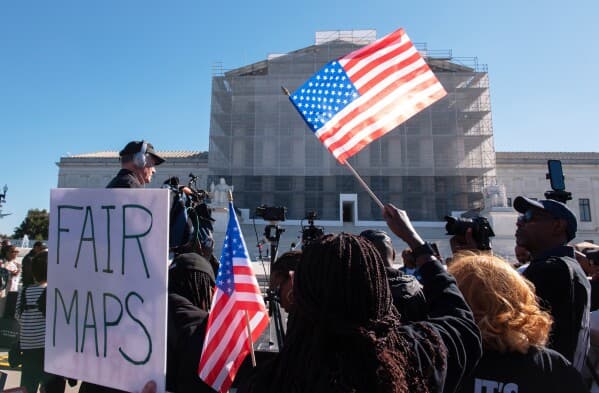We're loading the full news article for you. This includes the article content, images, author information, and related articles.
A legal battle over electoral maps in New York City offers a stark reminder of the global challenges in ensuring fair representation, echoing Kenya's own contentious history with constituency boundary reviews.

A group of New York City residents filed a lawsuit on Monday, 27 October 2025, against the state’s board of elections, igniting a legal battle with profound implications for democratic representation. The lawsuit alleges that New York's current congressional map unconstitutionally weakens the voting power of Black and Latino communities on Staten Island. At the heart of the complaint is the 11th congressional district, currently represented by Republican Nicole Malliotakis, the sole member of her party in New York City's congressional delegation.
The plaintiffs argue that the district's boundaries are outdated and fail to reflect significant demographic shifts over the past four decades. Citing census data, the lawsuit notes that from 1980 to 2020, the combined Black and Latino population on Staten Island grew from approximately 11% to nearly 30%, while the white population decreased from 85% to 56%. The legal challenge, filed by the Elias Law Group—a firm known for representing Democratic and progressive causes—contends that the current map illegally “packs” these minority communities into a single district where their ability to influence election outcomes is systematically diluted, a violation of the New York Voting Rights Act.
This lawsuit is the latest development in a fierce nationwide struggle over “gerrymandering,” the practice of drawing electoral district boundaries to give one political party an unfair advantage. The term, coined in 1812, describes the manipulation of maps to either “crack” an opposing party's supporters across multiple districts to dilute their vote or “pack” them into a few districts to limit their overall influence. In the United States, this process, known as redistricting, occurs every ten years following the national census to ensure districts have roughly equal populations.
The New York case unfolds against a backdrop of escalating partisan conflict. Following calls by former President Donald Trump for Republican-led states to redraw maps in their favor, Democrats have sought to counter these efforts in states they control. However, as noted by Michael Kang, a law professor at Northwestern University and a recognized expert on redistricting, states like New York and California face legal hurdles. In 2014, New York voters approved a constitutional amendment to create an independent commission to handle redistricting, a reform intended to curb partisan gerrymandering but which now complicates the Democratic party's ability to respond in kind.
While thousands of kilometres away, the principles at the core of the New York lawsuit resonate deeply with Kenya's own political experience. The debate over the drawing of electoral boundaries is a familiar and often contentious issue, central to the country's democratic health. In Kenya, this responsibility falls to the Independent Electoral and Boundaries Commission (IEBC), which is constitutionally mandated to review constituency and ward boundaries at intervals of not less than eight and not more than twelve years.
The goal of the IEBC's delimitation exercise is to ensure equitable representation, with population being a primary consideration. However, the process is fraught with political sensitivity. The creation, merging, or alteration of constituencies can determine political careers and shift power balances, making it a high-stakes affair. Kenya's history is marked by accusations that boundary reviews have been used to create unfair advantages, similar to the gerrymandering claims in the U.S.
Currently, Kenya faces a potential constitutional crisis as the next boundary review is stalled. The IEBC has been operating without commissioners, and legal challenges have created uncertainty about whether the review can be completed before the 2027 General Election. This delay means that the election could be held using boundaries based on outdated population data, raising serious questions about the principle of “one person, one vote” and fair representation for all Kenyans.
The legal challenge in Staten Island and the looming boundary crisis in Kenya highlight a universal truth: the drawing of electoral maps is one of the most critical, and most vulnerable, aspects of a functioning democracy. Whether in a mature democracy like the United States or a dynamic one like Kenya, the struggle to ensure that every citizen's vote carries equal weight is constant.
The New York lawsuit, seeking to empower minority voters, and the constitutional deadlines facing the IEBC in Kenya are two sides of the same coin. They underscore the vital importance of independent, transparent, and fair processes for determining political representation. As citizens in both nations turn to the courts and constitutional bodies to defend their rights, the outcomes will serve as a powerful measure of the health of their respective democracies.
Keep the conversation in one place—threads here stay linked to the story and in the forums.
Other hot threads
E-sports and Gaming Community in Kenya
Active 6 months ago
Popular Recreational Activities Across Counties
Active 6 months ago
The Role of Technology in Modern Agriculture (AgriTech)
Active 6 months ago
Investing in Youth Sports Development Programs
Active 6 months ago